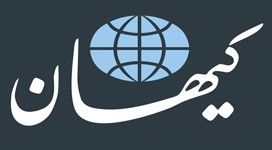April 19, 2018
The decision by Fatemeh Haghighatjoo, a prominent reformist politician, to stop wearing a headscarf in support of the women protesting against the mandatory hijab has made the news in recent days.
Mrs. Haghighatjoo, a former Majlis (Iranian Parliament) deputy who represented Tehran, Rey, Shemiranat, and Eslamshahr from 2000 to 2004, left Iran in 2005 and currently resides in the U.S.
Meanwhile, two influential reformist politicians have criticized young Iranian girls and women who have protested against the mandatory hijab.
Gholamhossein Karbaschi, the former mayor of Tehran (1990-1998) and the current secretary of the reformist Executive of Construction Party, said: “ I think the girls who have recently been protesting are just holding a grudge against the officials who run the country. They are concerned about social, economic and political conditions. After all, hijab is a legal issue. The protests are not the proper way of voicing discontent.”
Mostafa Tajzadeh, a senior member of the reformist party the Islamic Iran Participation Front, said: “I think the ‘Girls of Enqelab Street’ were well within their rights to voice their concerns. But the protests should have been lawful to minimize complications. For instance, they could have raised their headscarves on the end of poles while still wearing the hijab!”
The “Girls of Enqelab Street” movement has received global support. Many women’s rights activists and journalists around the world have expressed solidarity for the girls and women who have been protesting against the mandatory hijab in Iran.
Nousha Eshghipour is a UK-based activist who has been trying to muster global support for the women’s rights movement in Iran. Ms. Eshghipour told Kayhan London: “We have strong laws against inciting racial and religious hatred in the UK. Everyone is cautious about the comments they make in this regard. Social media is full of clips of people making disturbing comments which tantamount to breaking the law. But many people don’t fully understand this law. All they know is that it exists on the books.”
“Many people can’t tell the difference between opposing mandatory headscarves and rejecting the hijab altogether,” Eshghipour explained. “This is both a religious and a cultural issue. Women living in Iran don’t have the right to choose. They cannot express their views freely and without fear. We must clarify the difference between mandatory and optional hijab.”
Eshghipour noted: “Some women fear that they may be harassed and even attacked if they publicly voice their objections to forced hijab. We are campaigning against mandatory hijab, not Islam — this is an important distinction. Women should have the right to choose. Even people with strong religious beliefs should support women’s rights to choose whether to wear hijab or not. Mandatory hijab will ultimately turn people away from religion.”
“Some Iranians who live outside the country don’t support the women who struggle for their freedom,” she said. “They worry that if they express any opinion on the matter, Iranian authorities may detain them upon arrival at the airport. They travel to Iran on holidays for a couple of weeks and don’t want to concern themselves with the women’s struggle for freedom.”
Recently, social media has been flooded with video clips of British and Spanish women, who in a show of solidarity with the “Girls of Enqelab Street,” raised their headscarves in the air while standing on wooden boxes. That symbolic reenactment sent a strong message of support to the Iranian women and their struggle for freedom of choice.
“The reaction by the international community has the greatest impact on public opinion. Support from people in other countries can strengthen this cause,” Eshghipour said. “The second clip of women in Europe reenacting the removal of the hijab was posted on social media immediately after the first one. It is important for people in other countries to know about the plight of Iranian women. It is our responsibility to let the rest of the world know about the courageous women in Iran who demand their civil rights under such difficult situations.”
“Iranian women are encouraged once they realize that the entire world is concerned about their struggle. We should seek global support in realizing our dream of freedom and gender equality in Iran,” Eshghipour said. “But some political factions in Iran argue that the discussion about hijab should take a back seat to the more pressing economic problems the country is facing. This may be a reasonable argument from a male viewpoint, but for women, mandatory hijab is a fundamental rights issue.”
Eshghipour noted: “Hijab is one of the cornerstones of the Islamic Republic through which it controls and denigrates women. I doubt if the regime can survive without the hijab law. Therefore, opposing the mandatory hijab poses a serious challenge to the Islamic Republic regime. Global support can only strengthen the women’s struggle inside Iran.”
In conclusion, Eshghipour said: “The Islamic Republic asserts its authority through enforcing the hijab law. The ‘Girls of Enqelab Street’ and ‘White Wednesdays’ campaigns have given worldwide visibility to the struggle of Iranian girls and women for freedom, civil rights, and gender equality.”









